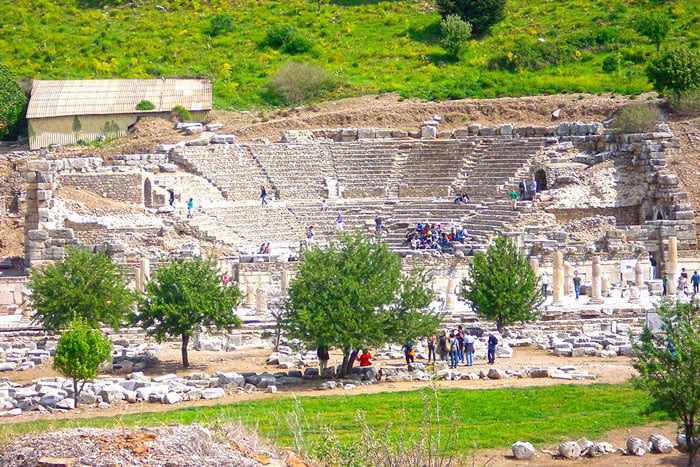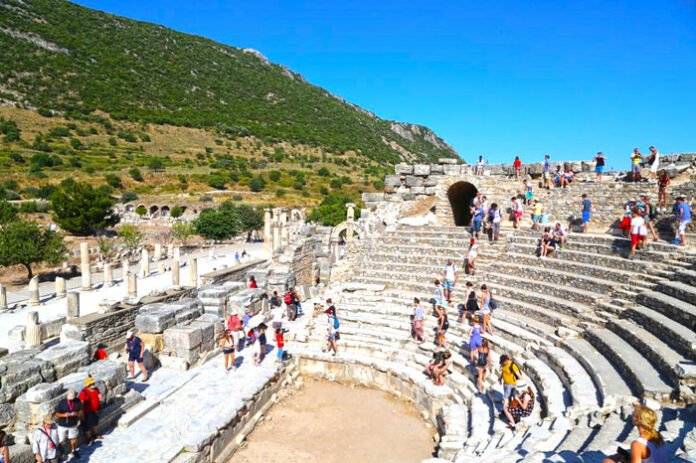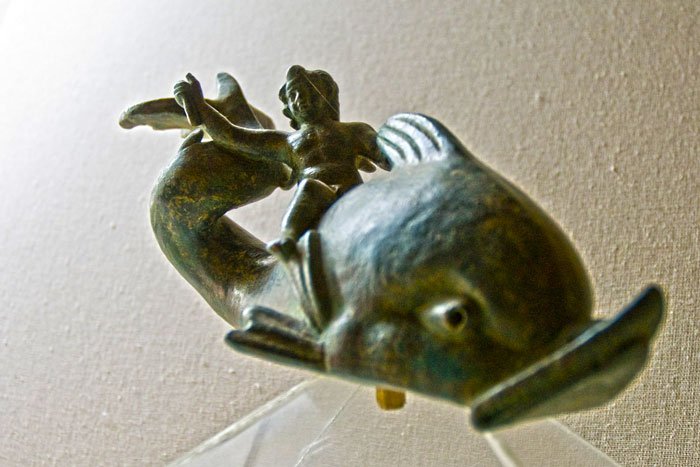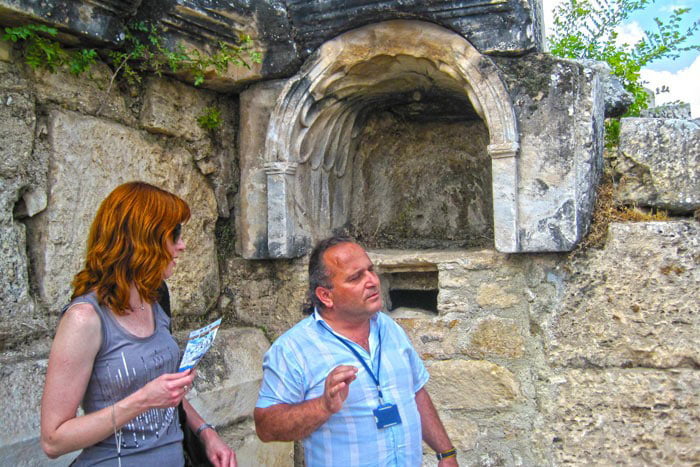Walking Guided Tours Ephesus – Discovering the Odeon of Ephesus
Introduction to the Odeon at Ephesus
The ancient city of Ephesus had two theaters. One was the large Great Theatre, and the other was the smaller Odeon.
The Odeon, also called the Bouleuterion, was likely used for city council meetings and musical performances. It was built around 150 AD by Publius Vedius Antoninus and his wife Flavia Papiane.
This structure is located near the State Agora and the Prytaneion, the ancient town hall. If you join one of our walking tour Ephesus options, you’ll see this special site up close.

Design and Layout of the Odeon
The Odeon looks like a small theater with a seating capacity of around 1,500 people. The seating area is called the cavea and is semi-circular in shape.
A shallow stage called the pulpitum sits in front of the audience. The stage could be reached from both sides through sloping side entrances called parodoi.
Behind the stage were five doors that connected the Odeon to another building, the Basilica Stoa.
Visitors could enter through doors in the Basilica, side arches at the parodoi ends, or an upper-level passage. This smart design made it easy for people to enter and exit the building quickly.
Explore structures like this on our walking guided tours Ephesus and see how public spaces worked in Roman times.
Seating and Structure Features
The seating area had two levels, separated by a walkway called the diazoma. The seats were made of marble and arranged in 13 wedge-shaped sections called kerkides.
The lower tier had 13 rows of seats, while the upper had 10 rows. Stairways between sections gave easy access to all seats.
There was a curved outer wall enclosing the entire cavea. Above the seating, a red marble colonnade likely stood, providing beauty and shade.
Evidence of this includes cuttings in the floor for pilaster bases and many marble fragments.
This clever and beautiful layout is one reason people enjoy walking guided tours Ephesus today.

Stage and Orchestra Details
The orchestra is a sunken semi-circular area in front of the stage. It measures about 9 meters by 4.5 meters.
The stage is around 4 meters deep and was backed by a decorative wall called the scaenae frons.
This wall once had columns and statues.
Some statues were removed by J.T. Wood, an archaeologist, in the 1800s. These now rest in the British Museum.
The statues include images of Lucius Verus, Faustina the Younger, the Muse Erato, and a silenus torso. You’ll learn about these on our customized tours Balkan and cultural packages.
Was the Odeon Covered?
Most large Greek and Roman theaters were open to the sky. They sometimes had fabric awnings to protect people from the sun and rain.
However, smaller buildings like the Odeon were often covered with roofs. This protected performances and meetings from bad weather.
There are no drains in the orchestra, suggesting that the Odeon had a roof. It was likely built with wooden beams and clay tiles, supported by strong wooden trusses.
Between the Odeon and the Basilica was a narrow corridor with a deep rainwater drain. This helped collect and remove water from the roofs of both buildings.
To learn more about ancient engineering like this, join one of our private tours Istanbul.
Restoration of the Odeon
Before 1970, the Odeon was mostly ruins. Only six rows of seats were visible, and the building was falling apart.
In 1970, the Selçuk Museum started a restoration project. They used concrete to support the seating and paved the stage to protect it.
In 1990, more work was done to rebuild the upper tiers. They added back the second level of seating above the original few rows.
These rows are now safe and open for tourists to visit and sit on.
Thanks to this effort, the Odeon remains a popular stop on all walking guided tours Ephesus.
Plan Your Visit Today
The Odeon of Ephesus is a hidden gem filled with art, music, and history. It is smaller than the Great Theatre, but it holds big stories and cultural value.
You can walk through ancient entrances, sit on marble seats, and imagine concerts from 2,000 years ago.
Want to visit? Have questions? Just contact us. We’ll help you book the perfect tour.
Whether you love history, architecture, or culture, this site will leave a strong impression.
Book your walking guided tours Ephesus today and experience the past like never before.




